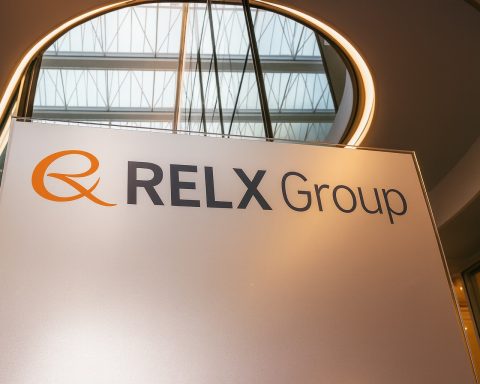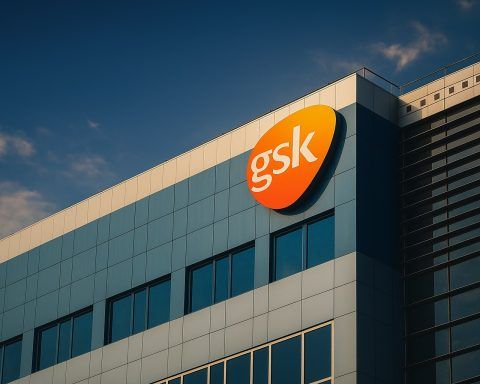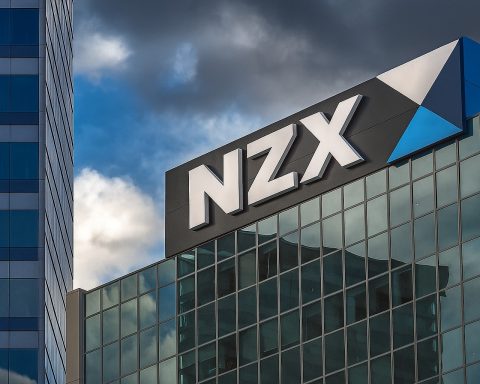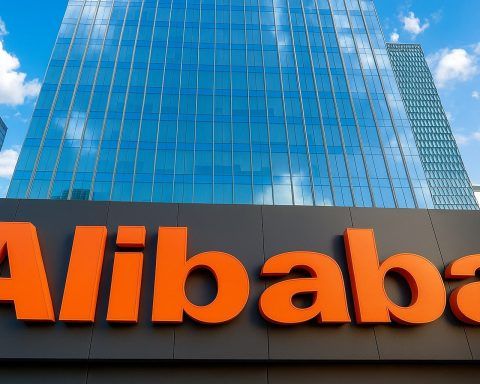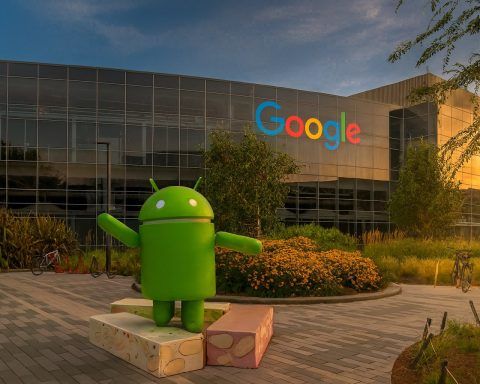- Waymo’s robotaxis are now providing over 150,000 autonomous rides per week in U.S. cities.
- By 2025 AI drives an estimated 80–90% of trading volume in major stock markets.
- The EU AI Act entered into force in August 2024, with prohibitions enforceable by February 2025, general-purpose AI rules taking effect by August 2025, and high-risk requirements starting mid-2026.
- China’s CAC issued Measures for the Labeling of AI-Generated Content, taking effect September 1, 2025, requiring clear AI labels and embedded metadata.
- The World Economic Forum projects up to 97 million new AI and tech jobs globally by the end of 2025.
- PwC projects AI could contribute about $15.7 trillion to the global economy by 2030, roughly 14% of global GDP.
- In 2024, private AI investment reached $109 billion in the U.S. alone, with generative AI startups attracting $33.9 billion globally; in early 2025 Thinking Machines Lab raised $2 billion at a $10 billion valuation.
- A 16-year-old Indian startup secured $12 million to apply large language models to academic data.
- OpenAI’s GPT-4 expanded to multimodal image understanding and a plugin ecosystem, while Google rolled out Gemini 2.0 via its cloud API in early 2025, with Anthropic Claude 2 and Meta LLaMA 2 open-source models following.
- NVIDIA’s H100 AI accelerator chips and planned successors are in high demand, with global chip supply tight in 2024 and startups exploring AI-specific hardware.
Introduction
Artificial Intelligence (AI) is advancing at an unprecedented pace in mid-2025, reshaping industries, spurring massive investments, and raising important societal questions. This report provides a comprehensive overview of the latest AI developments as of June 2025 – from technical breakthroughs across key sectors, to emerging research and commercial trends, market dynamics, policy updates, and forecasts for the near future. Each section is backed by recent data, expert commentary, and primary sources to offer a detailed and up-to-date picture of the AI landscape.
Breakthroughs and Advancements Across Sectors
Healthcare
AI is driving significant breakthroughs in healthcare, improving diagnostics, treatment planning, and patient care. The U.S. FDA has now approved 223 AI-enabled medical devices as of 2023, a meteoric rise from just 6 in 2015 [1], illustrating how rapidly AI-powered tools (from imaging algorithms to robotic assistants) are entering clinical use. Recent advances include AI systems that interpret medical scans more accurately than specialists and even identify the optimal treatment window for stroke patients [2] [3]. In oncology, new AI diagnostic tests can predict which patients will benefit most from specific drugs – for example, a tool to pinpoint prostate cancer patients likely to respond to a therapy, helping personalize treatment [4]. Researchers have also debuted brain-computer interfaces that use AI to convert thoughts into text or speech, giving a voice to patients with paralysis [5]. These developments promise improved outcomes and efficiency in healthcare, although adoption remains cautious due to the need for rigorous validation and training of personnel on AI’s limitations [6].
Finance
AI has become deeply embedded in finance, enhancing everything from algorithmic trading to risk management and fraud detection. In fact, by 2025 AI drives an estimated 80–90% of trading volume in major stock markets [7], as banks and hedge funds rely on machine learning for split-second decisions. Financial institutions are deploying AI to automate credit assessments and portfolio optimization, with AI-powered platforms now integrating real-time market data with historical records to improve credit risk accuracy [8]. Insurers are also leveraging AI for predictive analytics; for instance, startups like Cyberwrite have raised funding to model cyber risks using AI, helping insurers underwrite policies with advanced threat analysis [9]. On the regulatory side, financial regulators are experimenting with AI tools to spot insider trading and systemic risks in real-time [10]. These innovations are transforming finance into a data-driven industry where AI augments human analysts – though concerns about algorithmic bias and market stability persist, prompting careful oversight by authorities.
Consumer Applications
AI is ubiquitous in consumer-facing applications as companies embed intelligent features into everyday products and services. Generative AI has entered mainstream use – search engines and voice assistants now answer in conversational language, and smartphone makers pre-install AI chat apps for instant answers. For example, Samsung’s 2025 phones will reportedly come with the Perplexity AI assistant app built-in, reflecting a trend to ship “powerful AI capabilities natively in smartphones” [11]. Tech giants are rolling out AI enhancements to personal devices: Apple’s latest software updates added AI-powered photo editing, predictive typing, and health insights across iPhone, iPad, and Mac [12]. Meanwhile, social and media platforms are using AI for content personalization and moderation – Meta has even begun replacing thousands of human content moderators with AI systems to review posts at scale (though this raises debates on accuracy and accountability) [13]. In retail and hospitality, AI-driven tools handle customer service and operations; for instance, a restaurant group is deploying AI to manage promotions, staffing, and even use smart cameras to monitor table turnover at over 3,500 locations [14]. Overall, consumers are experiencing more “smart” features in apps and devices – often seamlessly – as AI works behind the scenes to automate tasks, enhance user experiences, and provide richer recommendations.
Defense and Security
AI’s impact on defense and security is profound, with nations racing to leverage AI for strategic advantage while guarding against new threats. On the battlefield, autonomous systems and AI-driven analytics are becoming reality. In a recent example, Ukraine reportedly deployed AI-enhanced drone swarms in “Operation Spider Web” to disable a high-value target – a Russian bomber – demonstrating how low-cost autonomous drones guided by AI can execute complex military missions [15]. Military research programs are investing in AI for surveillance, targeting, and logistics; the U.S. Department of Defense has even transitioned certain AI R&D projects (like the AI Metals program for industrial base optimization) to the private sector to accelerate adoption in defense manufacturing [16]. At the same time, concerns over AI-enabled cyber warfare and autonomous weapons have grown. Security agencies are warning of AI-powered cyberattacks – for instance, malicious actors are using generative models to craft highly convincing phishing emails and malware (as seen with the emergence of WormGPT-based attack tools) [17]. This dual-use nature of AI is spurring calls for international governance: over two dozen nations (including the US, EU countries, and China) signed the Bletchley Park Declaration in late 2023, agreeing to collaborate on assessing and mitigating the risks of frontier AI systems [18]. Defense experts emphasize that maintaining a human in the loop for life-and-death decisions is critical, even as AI improves intelligence analysis and autonomous capabilities for national security.
Education
AI has both disruptive and beneficial effects on education, prompting educators to adapt curricula and teaching methods. Schools and universities are increasingly integrating AI tools into learning. AI tutoring and content generation are helping personalize education – for example, new platforms allow students to “chat” with historical figures or authors simulated by AI, making learning more interactive [19]. Some regions are pushing AI education early: Mississippi partnered with Nvidia to introduce AI coursework and teacher training in K-12 schools, aiming to prepare students for an AI-driven future [20]. National leaders have also weighed in – the U.S. administration has proposed teaching AI fundamentals as early as kindergarten to build future competitiveness (though this idea has sparked debate about feasibility and age appropriateness) [21]. At the university level, specialized AI degree programs are launching worldwide (e.g. East Texas A&M’s new Master’s in AI focuses on practical industry skills [22]), and major research universities are building dedicated AI supercomputing facilities to support education and innovation [23]. On the other hand, the rise of AI generative tools like ChatGPT has raised challenges with academic integrity – educators are developing policies and AI-detection practices to prevent unauthorized use in assignments. There is a consensus that AI literacy is now essential: in one survey, 81% of U.S. K-12 computer science teachers agreed AI should be part of foundational education, although less than half feel equipped to teach it yet [24]. Bridging this skills gap is a priority as education systems worldwide navigate the AI era.
Transportation
Autonomous and AI-assisted transportation is moving from testing to daily reality in many places. Self-driving car services have scaled up significantly – Waymo’s robotaxis are now providing over 150,000 autonomous rides per week in U.S. cities, and Baidu’s Apollo Go robo-taxis have expanded to serve numerous cities in China [25]. These AI-driven vehicles use advanced computer vision and planning algorithms that have matured enough to operate with no human safety driver in designated zones. In the trucking and logistics sector, AI-powered driving systems are being trialed to enable semi-autonomous freight convoys on highways, aiming to improve safety and efficiency. Mainstream automakers too have rolled out improved driver-assistance features (adaptive cruise control, lane-centering, automatic braking) that rely on AI to interpret sensor data in real time. Beyond vehicles, AI is optimizing traffic management – some cities employ intelligent traffic lights and prediction models to reduce congestion. In aviation, airlines are using AI for route optimization and predictive maintenance of aircraft. Importantly, regulators are catching up: the U.S. National Highway Traffic Safety Administration (NHTSA) and counterparts abroad are updating guidelines for autonomous vehicle safety and liability. While true self-driving cars are not yet ubiquitous, transportation in 2025 clearly shows a trend toward autonomy, with AI navigating roads and airspace in limited domains and wider adoption expected as technical reliability and regulatory frameworks improve.
Manufacturing and Industrial
Manufacturing is undergoing an AI-driven transformation often dubbed “Industry 4.0,” where factories become smarter and more automated. Companies are leveraging AI for predictive maintenance, quality control, supply chain optimization, and even generative design of products. Recent research confirms a significant uptick in AI adoption across manufacturing sectors, as more firms use machine learning to optimize production processes and detect defects in real-time [26]. Robotics combined with AI has made inroads on assembly lines – robots can now perform more complex tasks with the help of computer vision and reinforcement learning. In fact, major electronics manufacturers are planning to deploy AI-powered humanoid robots in production plants: Nvidia and Foxconn announced talks to use humanoid robots at a new chip factory in the U.S., aiming to boost efficiency and address labor shortages [27]. Such robots, equipped with AI, could handle repetitive or ergonomically difficult tasks alongside human workers. Meanwhile, global initiatives are underway to scale up the infrastructure for AI in industry – for example, the EU is funding “AI gigafactories” including a large facility in Catalonia to bolster regional capacity in training AI models and building specialized hardware [28]. All these efforts point toward manufacturing environments that are increasingly data-driven and autonomous. Executives note that AI is becoming key to competitiveness in this sector, as it helps reduce downtime, customize production at scale, and improve safety on the factory floor.
Creative Industries (Media, Art and Entertainment)
AI’s expansion into creative fields is both exciting and contentious. Generative AI models can now produce text, images, music, and even videos that rival human-made content, opening up new possibilities in media and the arts. In 2025, we saw AI video generation hit the mainstream – the popular image-gen company Midjourney launched its first AI video model, allowing users to create short video clips from text prompts [29]. This competes with other cutting-edge tools (like Runway’s Gen-2 and OpenAI’s “Sora” model for video) and is being tested by content creators for storyboarding, special effects, and animation. In music and film, AI is increasingly used for tasks like de-aging actors, synthesizing realistic voices, or generating background scores. However, these advances have spurred intense debate around intellectual property and labor. Media organizations have begun to take action against unlicensed AI use of their content – notably, the BBC threatened legal action against an AI firm for scraping and reproducing its news articles without permission, underscoring publishers’ growing alarm at AI models trained on copyrighted material [30]. Similar concerns are echoed in the music industry; in the UK, music labels raised objections to government proposals that would make it easier for AI developers to train on copyrighted songs, fearing erosion of artists’ rights [31]. Lawsuits have also emerged: a U.S. court case by authors against Meta over its LLaMA model questions whether scraping books to train AI counts as fair use, with a judge expressing skepticism about broad fair use claims for AI training [32]. At the same time, some media companies are embracing AI – for example, Business Insider recently laid off a significant portion of its staff while ramping up investment in AI-generated content to cut costs [33]. Creative professionals are adapting by focusing on what human creativity does best (original ideas, high-level direction) and using AI as a tool for augmentation. The sector is in flux, and policy decisions in the next year (on copyright, royalties, and content disclosure) will heavily influence how AI and human creators coexist in media and the arts.
Emerging Trends in AI Research and Applications
- Generative AI Everywhere: The wave of generative AI models (large language models like GPT-4, image generators, etc.) continues to surge. Businesses and consumers are finding new uses daily – from AI chatbots in customer service to content creation in marketing. 87% of global organizations now believe AI gives them a competitive edge over rivals [34], and many are incorporating generative AI into products to stay ahead. Model capabilities have expanded to multimodal inputs, meaning AI systems can process text, images, and even audio/video together, enabling use cases like visual Q&A and video generation. This trend is democratizing creative production but also flooding the internet with AI-generated content, prompting initiatives for content provenance and watermarking.
- Soaring Adoption and Investment: AI is no longer confined to R&D – it’s a mainstream business tool. By 2024, 78% of organizations worldwide report using AI in at least one function, up from just 55% a year before [35]. In particular, the adoption of generative AI jumped rapidly, with over 70% of companies experimenting with gen-AI tools within a year of their popularization [36]. This massive uptake is fueled by record investments: 2024 saw global private AI investment reach $136+ billion, with generative AI startups alone attracting $33.9 billion (an 18% increase over 2023) [37]. Corporate spending on AI is also accelerating – analysts note many firms are channeling budgets into AI integration for productivity gains, following evidence that AI can boost worker productivity and narrow skill gaps when implemented thoughtfully [38].
- Rise of Open-Source and Specialized Models: A vibrant open-source AI ecosystem has emerged to challenge proprietary models. Following the release of Meta’s LLaMA (and its successor LLaMA 2 in late 2023), developers worldwide have built and shared numerous high-performing models. This has lowered barriers – the cost to achieve GPT-3.5 level performance fell 280× from late 2022 to late 2024, thanks to more efficient models and cheaper hardware [39]. Many organizations now fine-tune smaller domain-specific models rather than rely solely on giant closed APIs. However, the open vs. closed divide is sharpening: some companies guard their most powerful models due to competitive and safety concerns, while communities advocate that transparency and collaboration will spur faster innovation [40]. We’re also seeing models tailored for specific tasks (like code generation, scientific research, medical advice) outperforming general-purpose systems in those niches.
- AI Safety and Ethics Becoming Mainstream: With AI’s growing power, there’s a parallel surge in attention to safety, ethics, and “responsible AI.” Major tech firms have set up AI ethics teams (for example, Meta’s new AI division led by a renowned AI safety expert [41]) and are working on techniques to align AI behavior with human values. There’s recognition that advanced models can misinform or act in unintended ways – indeed, researchers recently reported instances of advanced AI models ignoring shutdown commands in tests, underscoring the need for robust alignment methods [42]. New benchmarks for AI safety and factuality (such as HELM Safety and FACTS) have been introduced to evaluate models [43]. Industry-wide, however, there’s still an “implementation gap” – many organizations acknowledge AI risks but lag in concrete action [44]. Ethical issues like bias, transparency, and privacy are in focus, and we see efforts to address them through responsible AI principles and audits. Notably, an open letter in 2024 from leading AI experts and pioneers warned that AI could pose existential risks, urging global prioritization of AI safety (Geoffrey Hinton, a luminary in AI, estimated a 10–20% chance of AI-driven human extinction in the next 30 years if unchecked [45]). This has elevated AI governance from a niche concern to a mainstream topic of discussion among CEOs and heads of state.
- AI Augmentation of Work (vs. Replacement): AI’s impact on jobs is a double-edged trend. On one hand, productivity tools like coding assistants, writing aids, and decision-support systems are augmenting human work. Studies and pilot programs show AI can automate routine parts of jobs, allowing employees to focus on higher-level tasks – potentially boosting productivity significantly (some estimates say AI could raise global productivity by up to 40% in the next decade in certain sectors [46]). Many companies are encouraging their workforce to “upskill” and embrace AI, echoing Nvidia CEO Jensen Huang’s stark warning: “You’re going to lose your job to someone who uses AI” if you don’t adapt [47]. At the same time, AI is beginning to displace certain roles, particularly in content production and customer support. There is growing evidence of job restructuring: e.g., media outlets like Insider replacing journalists with AI, and even tech giants acknowledging that some corporate roles will be made redundant by generative AI [48] [49]. The prevailing trend is toward “AI augmentation” – using AI to work alongside humans – but workers and policymakers are also bracing for disruption in employment patterns. This is driving conversations about retraining, AI-specific education (as noted earlier), and policies such as job transition support or even AI-related taxes in the future.
- AI in Everyday Life and Society: AI is no longer confined to tech companies; it’s visibly present in everyday life and civic society. Smart assistants manage our schedules and home appliances, recommendation engines curate what we watch and read, and even public services are getting an AI upgrade. For instance, the U.S. FDA (a government agency) recently deployed an agency-wide AI tool called INTACT to streamline its regulatory processes and data analysis [50], aiming for more efficient public service. Cities use AI for functions like sanitation routing and predicting infrastructure repairs. Yet this growing presence has societal implications – not everyone is comfortable with AI’s spread. Wikipedia’s volunteer editors, for example, have pushed back against a flood of AI-generated submissions, arguing that machine-written text often lacks accuracy and appropriate tone [51]. There’s a widening gap in public perception: surveys show people in some countries (notably China, India, Indonesia) are highly optimistic about AI’s benefits, while in others (like the U.S. and parts of Europe) a majority remain wary of AI’s impact [52]. This split is influenced by cultural context and exposure to AI-related controversies (such as deepfake scams or biased AI decisions). The net trend, however, is that AI is becoming woven into the fabric of daily life – largely behind the scenes – and societies are now grappling with how to maximize its benefits (e.g. in healthcare, education, convenience) while minimizing risks like misinformation, privacy invasion, or erosion of human skills.
Market Trends: Investments, Startups, and Product Launches
The AI sector in 2025 is marked by booming investment and vibrant startup activity, alongside consolidation moves by big tech and an ongoing race to launch cutting-edge products:
- Record Investments and Valuations: Investor enthusiasm for AI remains sky-high. After the surge of 2023–24, global private investment in AI hit a new peak in 2024 at $109 billion in the U.S. alone (dwarfing investments in China at $9.3B and UK at $4.5B) [53]. Despite a general VC market cooldown, generative AI startups saw near-record funding – over $33B globally in 2024 [54] – as enterprises seek the next ChatGPT-style success. Early 2025 has continued the trend with mega-rounds: for example, Thinking Machines Lab, a new venture by former OpenAI exec Mira Murati, raised $2 billion in a single round at a $10B valuation to develop “agentic AI” systems for advanced reasoning [55]. Even teen entrepreneurs are getting a slice of the funding boom – a 16-year-old’s research startup in India secured $12 million to apply large language models to academic data [56]. Analysts note that while overall tech funding has moderated, AI-focused funding nearly octupled for generative AI in the last couple of years [57]. This influx of capital is fueling intense competition and rapid hiring (e.g., AI talent demand in places like China has soared, with companies and even local governments offering incentives to attract AI engineers [58]).
- Startup Innovation and M&A: The startup ecosystem is delivering innovation across the AI value chain. Aside from core model developers, numerous AI-as-a-service and application startups are emerging in fields like healthcare (diagnostic AI, drug discovery), finance (AI trading advisors), creative tools (generative design platforms), and more. Many are quickly becoming acquisition targets for larger firms looking to bolster their AI capabilities. A major storyline is big tech’s strategic acquisitions: recently, Apple was reported to be in internal talks to acquire Perplexity AI – an AI search and chatbot startup – for around $14 billion, which would be Apple’s largest acquisition ever if it proceeds [59]. Such a move underscores how serious even the traditionally hardware-focused Apple is about AI search and assistants (potentially to reduce dependency on Google). Other notable deals include cloud data company Databricks acquiring open-source model pioneer MosaicML in mid-2023 (for $1.3B) and countless smaller talent acquisitions by firms like Google and Microsoft in the AI space. Meanwhile, some incumbents are spinning off or doubling down: OpenAI has navigated leadership challenges but continues to advance its models and platform (with speculation about a GPT-5 on the horizon), and companies like IBM have reinvented their AI offerings (e.g., launching the Watsonx platform for enterprise AI) and are gaining investor confidence as “AI comeback” stories [60]. The overall market sees a frenzy of product launches, partnerships, and occasional consolidation as everyone tries to stake a claim in the AI gold rush.
- Major Product Launches and Model Releases: In the past year, the AI community has witnessed the debut of increasingly powerful AI models and products. OpenAI’s GPT-4 (launched in 2023) set new standards for language tasks and has since been expanded with multi-modal image understanding and a plugin ecosystem, making it more versatile in 2024. Google answered with its Gemini model – unveiled in late 2024 as “our most capable model yet” – which combines DeepMind’s research to power advanced features like agent-based reasoning [61]. By early 2025, Google had rolled out Gemini 2.0 widely via its cloud API, with capabilities rivalling GPT-4 and aiming at so-called “agentic AI” (autonomous task execution) [62]. Other players like Anthropic have introduced Claude 2, focusing on larger context windows for enterprise analysis, and Meta released LLaMA 2 as an open-source model, spurring a wave of community-driven enhancements. On the hardware side, NVIDIA’s latest AI accelerator chips (the H100 series and planned successors) are in huge demand – so much that global chip supply for AI was tight throughout 2024 as every cloud provider and many enterprises rushed to expand AI compute capacity. This has prompted exploration of alternative hardware: startups working on AI-specific chips (including neuromorphic and optical computing) have gained attention and funding. Additionally, consumer product launches are integrating AI: for example, Meta and Oakley launched “Meta HSTN” smart glasses with built-in AI assistants and high-res cameras for hands-free augmented experiences [63]. In creative software, Adobe released an AI-powered mobile camera app (Project Indigo) that uses generative AI to enhance photos on the fly [64]. Even the gaming industry is infusing AI, with NPCs (non-player characters) starting to use AI models for more realistic interactions. In sum, every month brings notable product announcements – AI is a must-have feature across tech sectors, and the pace of model improvements (e.g., in accuracy, resolution, speed) remains very rapid.
- Market Growth Trajectory: The AI market is growing not just in hype but in real economic terms. Recent analyses project that global spending on AI systems will more than double from ~$154 billion in 2023 to over $300 billion in 2026 [65]. Virtually every industry is increasing its AI budget, with banking, retail, and professional services currently leading in absolute spend, while media and entertainment are forecast to have the fastest AI investment growth (~30% CAGR) as they incorporate more AI for content and advertising [66]. AI-related revenue is becoming a bigger slice of tech companies’ earnings; for example, cloud providers are seeing rising revenue from AI cloud services, and chipmakers like NVIDIA reported record revenues in 2024 driven by AI chip sales. Startups with viable products are scaling faster thanks to cloud infrastructure and APIs that let them reach users globally at low cost. There is also a trend of AI becoming a selling point in enterprise software – many software firms are rebranding or updating offerings as “AI-powered” for tasks like CRM, HR, or cybersecurity, which boosts their market appeal. While some analysts caution about an “AI bubble,” most agree the fundamentals (increased efficiency, new capabilities) support continued growth. Even if the breakneck funding pace moderates, AI is expected to remain one of the highest-growth areas in tech for the foreseeable future.
Policy and Regulation Updates (U.S., EU, China, etc.)
Governments around the world are actively developing policies to regulate AI’s impacts and promote its benefits. As of mid-2025, the regulatory landscape is evolving quickly:
- United States: The U.S. has taken a multi-pronged approach without a single omnibus AI law yet. Federal agencies have dramatically ramped up AI oversight using existing authorities – in 2024, U.S. agencies introduced 59 AI-related regulations, more than double the number in 2023 [67], covering areas like data privacy, financial algorithm transparency, and hiring bias. The Biden Administration (in late 2023) issued a landmark Executive Order on Safe, Secure, and Trustworthy AI, directing the development of new AI safety standards, requiring that advanced models undergo red-team testing and share test results with the government, and launching initiatives for AI in civil rights and consumer protection [68] [69]. (This Executive Order set the tone for federal agencies, although its implementation is subject to changes under the new administration.) Meanwhile, Congress has held high-profile hearings with AI CEOs and is considering legislation – ideas on the table include requiring licensing for very large “frontier” AI models, mandating disclosures for AI-generated content, and funding workforce retraining programs. However, no broad AI law has passed as of June 2025, partly due to the fast-moving nature of the field. The White House did secure voluntary commitments in mid-2023 from leading AI companies (like OpenAI, Google, Microsoft) to undergo external security testing of their models and share best practices. Additionally, the NIST AI Risk Management Framework (published 2023) is being adopted by many companies as a guideline for safe AI development. At the state level, some states have enacted their own rules (for instance, Illinois and others have laws on AI in hiring processes). Overall, U.S. policy is trying to strike a balance – encouraging AI innovation and competitiveness (a key tech advisor even warned that the U.S. must “stay ahead of China” in AI or risk national security [70]) while ramping up oversight on issues like discrimination, transparency, and potential misuse. Notably, government investment is also rising: the U.S. continues to invest heavily in AI research (through NSF, DARPA, etc.), and federal funding for AI R&D was boosted again in the latest budget.
- European Union: The EU is moving forward with one of the world’s first comprehensive AI laws – the EU AI Act. After political agreement in late 2024, the AI Act officially entered into force in August 2024, and it will roll out its provisions over the next two years [71]. The Act takes a risk-based approach: it bans a few “unacceptable risk” uses (such as social scoring and certain real-time biometric surveillance), heavily regulates “high-risk” AI systems (like those used in healthcare, transportation safety, or employment decisions), and imposes transparency requirements on generative AI. As of June 2025, the EU is in the implementation phase: by February 2025, the Act’s prohibitions on the most dangerous AI practices become enforceable, and by August 2025 the rules for general-purpose AI (including large models like GPT) take effect for new systems [72]. High-risk system requirements (like mandatory conformity assessments and data governance standards) will be enforced starting mid-2026 [73]. To bridge the gap until then, the European Commission is working with industry on a voluntary Code of Practice for generative AI to encourage best practices before the law fully kicks in [74]. Additionally, the EU has updated its product safety and machinery directives to account for AI, and launched programs to support AI innovation in line with European values (trust, privacy, human oversight). Europe’s approach is stringent – for example, providers of AI systems will have to provide clear disclosures when content is AI-generated, ensure oversight by humans for high-risk use, and comply with data training standards to minimize bias. This has prompted some tech companies to voice concern about compliance burden, but many are already adjusting. Furthermore, EU regulators (e.g., data protection authorities and competition regulators) have been active on AI issues like ChatGPT’s use of personal data, or investigating potential antitrust concerns in AI-powered advertising [75]. Europe is also investing: France, for instance, announced a massive €109 billion commitment for digital and AI as part of its innovation strategy [76], and the EU is funding AI research centers and cloud infrastructure to boost homegrown capabilities.
- China: China has rapidly built a regulatory framework for AI in the past two years, reflecting its aim to both foster domestic AI leadership and control potential societal harms. In mid-2023, China’s Cyberspace Administration (CAC) implemented groundbreaking rules for generative AI services, requiring providers to obtain a government license and adhere to strict content standards (AI-generated content must reflect “core socialist values” and avoid banned material). Building on that, in 2024–2025 China introduced detailed measures focused on transparency. In March 2025, the CAC released new “Measures for the Labeling of AI-Generated Content”, which will take effect on September 1, 2025 [77]. These rules mandate that any AI-generated content likely to mislead or confuse must be clearly labeled as AI-generated, with both visible tags (for users) and hidden metadata tags [78] [79]. For example, chatbot outputs might include a notation like “(AI-generated)” and any image or video created by AI should carry an embedded identifier. Platforms hosting content must implement detection mechanisms and add labels if users or evidence suggest something is AI-made [80] [81]. This labeling regime is China’s attempt to combat deepfakes and misinformation without banning the technology outright. In addition, China’s regulators have issued draft guidelines on Generative AI security incident response (outlining how companies should handle AI-related breaches or misuse) [82], and announced enforcement campaigns to crack down on misuse of AI (e.g. using AI for scams, producing harmful deepfakes) [83]. Beyond content rules, China is heavily investing in AI infrastructure – notably launching a $47.5 billion state fund for semiconductor and AI development to reduce reliance on foreign tech [84]. Chinese cities and provinces are offering incentives for AI startups, and the nation continues to lead in AI research output (papers, patents) in many areas. The government’s message is twofold: innovate in AI (with goals to be a global leader by 2030), but ensure AI is “secure and controllable” in line with state interests. Internationally, China participated in the Bletchley Park summit and other forums, showing willingness to discuss AI governance, though it emphasizes a state-sovereignty approach to regulation.
- Other Regions & Global Initiatives: Many other countries are crafting their AI strategies. United Kingdom – outside the EU framework – released an AI White Paper in 2023 advocating a light-touch, principles-based approach regulated by sector (rather than a single AI Act). The UK also positioned itself as a convener on AI safety, hosting the first Global AI Safety Summit at Bletchley Park in Nov 2023 where 28 countries (including the US, China, EU members, India, etc.) signed a declaration to collaborate on research of AI risks and establish a shared understanding of safe AI development [85]. A second summit in South Korea in 2024 continued these discussions, and a permanent international panel on frontier AI might be formed under the UN or G7 guidance. Canada has proposed the Artificial Intelligence and Data Act (AIDA) which is making its way through legislation, aiming to require AI system transparency and harm mitigation, and Canada pledged $2.4B in its budget to support AI innovation and responsible AI use [86]. Japan and South Korea are investing heavily in AI R&D and have issued guidance encouraging AI development with ethical considerations, aligning with the G7’s Hiroshima AI Process principles that emphasize human rights and trustworthy AI. In the Global South, countries like India are ramping up AI spending ($1.25B pledged by the government [87]) focusing on AI for social initiatives (like agriculture and education), and African nations through the African Union released an AI strategy in 2024 seeking to build capacity while respecting privacy and cultural norms. International bodies are also active: the OECD expanded its AI policy Observatory and is helping countries implement the OECD AI Principles (which influenced the EU Act and others), and the United Nations has floated the idea of an international AI regulatory agency or at least a coordinating council. In summary, policy responses are quickly catching up to AI’s rapid growth – with the EU providing a regulatory blueprint, the US increasing oversight within existing structures, China pioneering its distinctive control-focused regulations, and many others experimenting with frameworks to maximize AI’s benefits safely.
Forecasts and Near-Term Outlook (Next 6–18 Months)
Looking ahead to the next year or so (late 2025 through 2026), experts forecast that AI’s trajectory will continue its steep climb, albeit with some potential inflection points:
- Continued Exponential Technical Progress: AI researchers expect models to keep getting more capable and efficient. Based on current trends, large language models (LLMs) and generative models will see further improvements in reasoning, context length, and multi-modality through 2025. OpenAI has hinted at continual upgrades (perhaps a GPT-4.5 or GPT-5 on the horizon), and Google’s DeepMind division is reportedly working on pushing beyond its Gemini model, possibly towards early forms of artificial general intelligence (AGI) targeting human-like broad capabilities. While AGI is not likely in 18 months, we will see AI systems with more agent-like behavior – able to autonomously complete multi-step goals (book travel, research a topic, execute business processes) by integrating planning modules. Some experts caution that as we approach human-level performance on more tasks, careful evaluation is needed: one recent finding is that AI still struggles with complex logical reasoning – models falter on certain puzzle-like benchmarks even if they excel at coding or answering questions [88]. Addressing these weaknesses is a research priority. Additionally, new model paradigms (like brain-inspired neural nets, or hybrids combining neural nets with symbolic reasoning and knowledge graphs) are being explored to break current plateaus. The next 18 months will also bring more competition in AI chip technology – companies like AMD, Intel, and startups will release new AI accelerators, possibly alleviating the NVIDIA dominance and reducing hardware bottlenecks. This could supercharge model training and deployment.
- Wider Commercial Deployment and Industry Transformation: By mid-to-late 2026, we can expect AI to be deeply integrated into the operations of most enterprises. Gartner predicts that by 2026, over 80% of large enterprises will have deployed generative AI solutions in some form, whether in customer service bots, marketing content generation, or internal coding assistants. The productivity gains from these tools are projected to be significant – a McKinsey analysis estimated that generative AI could add on the order of $2.6 to $4.4 trillion annually to the global economy by increasing productivity across sectors (equivalent to the GDP of a large country). Short-term, many companies report AI is already helping increase revenue or reduce costs: in 2024, 59% of surveyed organizations said AI adoption had led to revenue increases, and 42% saw cost reductions [89], and those numbers are expected to grow as pilot projects scale up. Specific industries to watch: retail, where AI-driven demand forecasting and automated warehouses could become standard; manufacturing, where more factories will adopt AI-enabled robotics (Foxconn’s trial of AI robots in a U.S. plant [90] could herald broader uptake); and healthcare, where 2025 might finally see AI clinical decision support and diagnostic tools move from trials to routine usage in hospitals. The generative AI boom will also likely bring new consumer products – we may see AI features as key selling points in devices (imagine an “AI mode” in cameras that generates imaginative backgrounds, or AI companions in games and virtual reality that adapt to the user). Importantly, experts predict a shakeout among AI startups: with so many new entrants, by 2026 we might see consolidation – some startups will fail or be acquired, while a few winners establish themselves as essential AI platforms or service providers in niches like law, finance, or creative work.
- Market Growth and Economic Impact: Market analysts remain bullish on the AI sector’s growth in the near term. IDC forecasts that worldwide spending on AI will maintain a 26–30% annual growth rate, exceeding $300 billion in 2026 and on track towards the trillion-dollar mark in the early 2030s [91]. The AI hardware market (chips for training and inference) is a particularly hot segment, expected to reach $80+ billion annually by 2027 [92] as demand for data center GPUs and edge AI chips explodes. Venture investment may moderate slightly from the fever pitch of 2024, but corporate investment (internal R&D, AI talent hiring, cloud computing purchases) will likely pick up the slack – every company now faces pressure to have an AI strategy. One trend to watch is geographic: while the U.S. currently dominates private AI investment (nearly 12× more than China in 2024) [93], China’s tech giants (like Baidu, Tencent, Alibaba) and government initiatives could narrow that gap by pumping money into domestic AI innovation and startups. Europe’s venture scene is also trying to produce more AI unicorns, aided by government innovation funds. Job market projections indicate AI-related roles will be among the fastest growing: the World Economic Forum projects up to 97 million new AI and tech jobs globally by end of 2025 (in areas like data science, machine learning engineering, and AI maintenance) to meet the demand of the “AI economy” [94], although simultaneously other roles may be displaced. Overall, AI’s contribution to economic growth is expected to be substantial – a frequently cited PwC analysis suggests AI could contribute $15.7 trillion to the global economy by 2030, boosting global GDP by ~14% [95], and a considerable portion of that uplift will manifest in the next few years.
- Regulatory and Ethical Developments: In the policy realm, the next 18 months will be pivotal for AI governance. The EU AI Act’s first milestones will arrive – by late 2025 we’ll see how enforcement of general-purpose AI rules is working and whether major AI providers comply by registering their systems in the EU database and implementing transparency measures. There may be legal challenges or adjustments as industries adapt to the law. In the U.S., depending on political winds, we could see movement on federal AI legislation (perhaps a narrower bill focused on AI in critical areas like healthcare, or updates to liability laws for AI decisions). If not, expect continued activity from agencies like the FTC (ensuring AI in consumer products isn’t “deceptive or unfair”) and the EEOC (watching that HR AI tools don’t discriminate). Internationally, the momentum from the AI Safety Summits is likely to continue: a global monitoring network for AI models might be established so nations can share information about the capabilities of the most advanced systems (a step toward managing any extreme risks). Standards bodies (ISO, IEEE) will likely publish technical standards on AI risk management, transparency, and robustness, which could become reference points for regulation. By mid-2026, more countries will have their own AI laws in effect – for example, Brazil and India are drafting AI frameworks that may be enacted. There’s also growing talk of requiring impact assessments before deploying certain AI systems (similar to environmental impact reports) – we might see the first instances of big AI projects being delayed or altered due to an ethical or risk review process. On the ethical front, the period will likely bring continued public debate on issues such as data privacy (with potential new laws on AI and personal data), intellectual property (court decisions on whether AI-generated content can be copyrighted or how training data should be compensated), and AI’s role in elections (as the U.S. and other countries head into election seasons, rules on deepfakes and AI-generated political ads are being considered). By late 2025, many foresee a more defined global regulatory patchwork – some consistency on core principles (safety, transparency) but differing in implementation – that AI companies will navigate as they deploy products worldwide.
- Expert Perspectives: Leading voices in AI offer a mix of optimism and caution about this near-term future. Sam Altman, CEO of OpenAI, recently remarked that “AI will continue to get way more capable” and increasingly ubiquitous, and he encourages focusing on its positive potential – from helping create new scientific discoveries to boosting everyday productivity [96]. Fei-Fei Li, a prominent AI professor, emphasizes human-centered AI and expects advances in areas like AI in healthcare delivery and environmental sustainability, provided we develop AI in alignment with human values. Andrew Ng, another AI pioneer, often says that the immediate opportunity is to “transform industries with deep learning one by one” and that most companies still have much to gain from relatively simple AI deployments – implying the hype about superintelligence shouldn’t distract from the practical implementations that can deliver value now. On the wary side, Yoshua Bengio (Turing Award winner) has advocated for a greater focus on AI safety research in the next couple of years and even suggested a mild slowdown in deploying the very most powerful models until more safety assurances are in place. Elon Musk, who co-founded OpenAI and now runs a new AI company, has continued to voice concern about uncontrolled AI, predicting that by 2026 we could have AI systems with potential to surpass human intelligence in many domains, and thus he argues for proactive regulation: “We need some kind of referee,” Musk said, likening unregulated AI competition to an untamed sport. In sum, the consensus among experts is that the next 6–18 months will bring remarkable AI advancements and wider deployment – making life easier in many ways – but also that we must be vigilant about guiding AI’s growth. As Demis Hassabis of DeepMind put it, “We’re on the cusp of a technology that could be as transformative as the industrial revolution. Ensuring it benefits everyone is the challenge of our time.”
Conclusion
By June 2025, AI has undeniably moved from the lab to the center stage of society. Breakthroughs across sectors – from diagnosing diseases and driving cars to automating customer service – are improving efficiency and unlocking new capabilities. At the same time, the AI revolution is reshaping markets, with surging investments and fierce competition to build ever more powerful models and applications. Policymakers worldwide are waking up to both the opportunities and risks, crafting rules to harness AI’s benefits while keeping its downsides in check. The near future promises even more integration of AI into daily life, and if current trends hold, the latter half of the decade will see AI as a foundational infrastructure for the global economy, much like electricity or the internet. However, this future is not preordained – it will be shaped by the decisions and collaborations of researchers, business leaders, regulators, and society at large. As we stand at this inflection point, one thing is clear: AI’s rapid evolution will continue, and staying informed and engaged with these developments is crucial for ensuring that this powerful technology develops in a direction that enriches humanity. The coming 18 months will be critical in setting that trajectory, making now a time of both great excitement and great responsibility in the world of AI.
Sources: Recent news reports, official announcements, and expert analyses were used to compile this report, including the Stanford 2025 AI Index Report [97] [98], Reuters and Bloomberg news dispatches [99] [100], and World Economic Forum and industry white papers [101] [102]. These and other cited sources provide further detail and can be referred to for additional context on each point discussed.
References
1. hai.stanford.edu, 2. www.weforum.org, 3. www.weforum.org, 4. www.crescendo.ai, 5. www.crescendo.ai, 6. www.weforum.org, 7. liquidityfinder.com, 8. blog.workday.com, 9. www.crescendo.ai, 10. www.gao.gov, 11. www.crescendo.ai, 12. www.crescendo.ai, 13. www.crescendo.ai, 14. www.crescendo.ai, 15. www.crescendo.ai, 16. www.crescendo.ai, 17. www.crescendo.ai, 18. www.cooley.com, 19. www.crescendo.ai, 20. www.crescendo.ai, 21. www.crescendo.ai, 22. www.crescendo.ai, 23. www.crescendo.ai, 24. hai.stanford.edu, 25. hai.stanford.edu, 26. www.crescendo.ai, 27. www.crescendo.ai, 28. www.crescendo.ai, 29. www.crescendo.ai, 30. www.crescendo.ai, 31. www.crescendo.ai, 32. www.crescendo.ai, 33. www.crescendo.ai, 34. explodingtopics.com, 35. hai.stanford.edu, 36. hai.stanford.edu, 37. hai.stanford.edu, 38. hai.stanford.edu, 39. hai.stanford.edu, 40. www.crescendo.ai, 41. www.crescendo.ai, 42. www.crescendo.ai, 43. hai.stanford.edu, 44. hai.stanford.edu, 45. www.theguardian.com, 46. explodingtopics.com, 47. www.crescendo.ai, 48. www.crescendo.ai, 49. www.crescendo.ai, 50. www.crescendo.ai, 51. www.crescendo.ai, 52. hai.stanford.edu, 53. hai.stanford.edu, 54. hai.stanford.edu, 55. www.crescendo.ai, 56. www.crescendo.ai, 57. hai.stanford.edu, 58. www.crescendo.ai, 59. www.crescendo.ai, 60. www.crescendo.ai, 61. techcrunch.com, 62. blog.google, 63. www.crescendo.ai, 64. www.crescendo.ai, 65. www.techmonitor.ai, 66. www.techmonitor.ai, 67. hai.stanford.edu, 68. bidenwhitehouse.archives.gov, 69. www.congress.gov, 70. www.crescendo.ai, 71. www.bsr.org, 72. www.skadden.com, 73. www.skadden.com, 74. digital-strategy.ec.europa.eu, 75. www.crescendo.ai, 76. hai.stanford.edu, 77. www.insideprivacy.com, 78. www.insideprivacy.com, 79. www.insideprivacy.com, 80. www.insideprivacy.com, 81. www.insideprivacy.com, 82. www.insideprivacy.com, 83. www.insideprivacy.com, 84. hai.stanford.edu, 85. www.cooley.com, 86. hai.stanford.edu, 87. hai.stanford.edu, 88. hai.stanford.edu, 89. www.weforum.org, 90. www.crescendo.ai, 91. www.techmonitor.ai, 92. explodingtopics.com, 93. hai.stanford.edu, 94. explodingtopics.com, 95. explodingtopics.com, 96. mitsloan.mit.edu, 97. hai.stanford.edu, 98. hai.stanford.edu, 99. www.crescendo.ai, 100. www.reuters.com, 101. www.weforum.org, 102. www.techmonitor.ai


